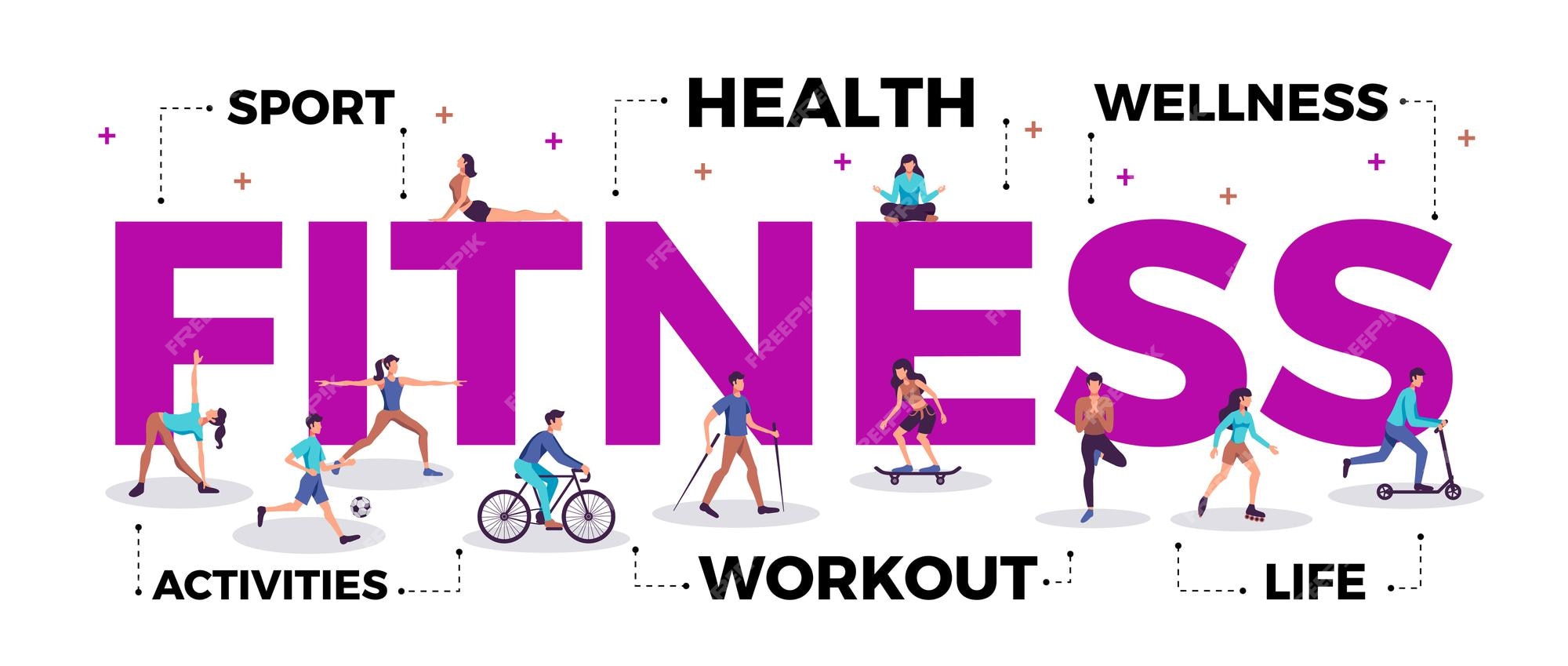The Importance of Physical Health
Physical health is an essential aspect of overall well-being. It encompasses various factors, including maintaining a healthy weight, improving cardiovascular fitness, and enhancing muscular strength. Exercise plays a fundamental role in promoting physical health and has the potential to transform our lives in numerous ways.
Understanding Exercise and Its Impact on the Body
Exercise is any form of physical activity that engages the body's muscles and requires energy expenditure. When we exercise, our body undergoes a series of physiological changes that contribute to improved health and fitness. These changes include increased heart rate, improved circulation, and the release of endorphins, which are natural mood enhancers.
Key Benefits of Regular Exercise
Weight Management and Metabolism
Regular exercise helps in maintaining a healthy weight by burning calories and increasing metabolism. Engaging in activities that raise our heart rate and make us break a sweat can aid in weight loss and prevent weight gain.
Cardiovascular Health
Exercise strengthens the heart muscle, improves blood circulation, and lowers the risk of cardiovascular diseases such as heart attacks and strokes. Aerobic exercises, such as brisk walking, jogging, or cycling, are particularly beneficial for cardiovascular health.
Muscle Strength and Bone Density
Strength training exercises, such as weightlifting or resistance training, promote muscle growth and increase bone density. Strong muscles and bones contribute to better posture, balance, and overall physical strength.
Improved Mental Health
Physical activity stimulates the release of endorphins, which are known as "feel-good" hormones. Regular exercise can reduce symptoms of depression, anxiety, and stress, while also boosting self-esteem and promoting better mental well-being.
Types of Physical Activity
There are various types of physical fitness exercise, each offering unique benefits to the body. It is essential to incorporate a combination of exercises into our routine for comprehensive fitness.
Aerobic Exercises
Aerobic exercises, also known as cardio exercises, increase heart rate and improve lung function. These activities include running, swimming, dancing, and playing sports like tennis or basketball.
Strength Training
Strength training exercises involve working against resistance to build muscle strength. This can be achieved through weightlifting, using resistance bands, or performing bodyweight exercises like push-ups and squats.
Flexibility and Balance Exercises
Flexibility exercises, such as stretching or yoga, improve range of motion and joint flexibility. Balance exercises, like tai chi or standing on one leg, enhance stability and reduce the risk of falls, especially in older adults.
Incorporating Exercise into Daily Life
To make exercise a sustainable habit, it is important to find activities that are enjoyable and fit into our lifestyle. Here are some tips for incorporating exercise into daily life:
Setting Realistic Goals
Start with small, achievable goals and gradually increase intensity and duration. This helps in maintaining motivation and prevents burnout or injuries.
Finding Activities You Enjoy
Discover activities that you find enjoyable and suit your preferences. Whether it's dancing, hiking, or playing a team sport, engaging in something you love makes exercise more fun and sustainable.
Making Exercise a Habit
Schedule dedicated time for exercise in your daily routine. Treat it as a priority, just like any other important task. Consistency is key to reaping the benefits of exercise.
Overcoming Barriers to Exercise
Despite the numerous benefits of exercise, certain barriers can hinder our commitment. It's important to address these obstacles and find ways to overcome them.
Lack of Time
Many people struggle with finding time for exercise amidst busy schedules. However, even short bursts of physical activity can be beneficial. Prioritize your health and consider creative ways to incorporate exercise into your routine, such as taking the stairs instead of the elevator or walking during lunch breaks.
Lack of Motivation
Motivation can fluctuate, but there are strategies to stay motivated. Set meaningful goals, find an exercise buddy, or reward yourself for achieving milestones. Additionally, exploring different types of exercises can help prevent boredom and maintain interest.
Physical Limitations
Some individuals may have physical limitations or health fitness conditions that require modifications in their exercise routines. Consult with a healthcare professional or a certified fitness trainer who can provide guidance on suitable exercises and adaptations.
Safety Considerations and Precautions
To ensure a safe and effective exercise routine, it's important to follow certain precautions and safety guidelines.
Warm-Up and Cool-Down
Always start with a warm-up session to prepare your muscles for exercise and reduce the risk of injury. Similarly, end your workout with a cool-down period to gradually decrease your heart rate and allow your body to recover.
Proper Form and Technique
When performing exercises, pay attention to proper form and technique. Incorrect form can lead to injuries or strain on muscles and joints. If you're unsure, seek guidance from a qualified fitness professional.
Listening to Your Body
Pay attention to your body's signals during exercise. If you experience pain, dizziness, or extreme fatigue, it's important to stop and seek medical advice if needed. Push yourself, but also respect your body's limits.
Exercise and Aging
Regular exercise is particularly beneficial for older adults, as it helps maintain physical independence and reduces the risk of age-related health issues.
Benefits for Older Adults
Exercise improves balance, flexibility, and mobility, reducing the risk of falls and fractures. It also enhances cognitive function, preserves muscle mass, and promotes social interaction, contributing to an overall higher quality of life.
Tailoring Exercise Programs for Seniors
Older adults should engage in exercises that suit their abilities and health conditions. Low-impact activities like swimming, tai chi, or gentle yoga can be excellent choices. Consulting with a healthcare professional or a geriatric fitness specialist is recommended to design a personalized exercise program.
Exercise and Chronic Conditions
Exercise is beneficial for individuals with chronic conditions, as it can help manage symptoms and improve overall well-being.
Diabetes
Regular physical activity improves insulin sensitivity and blood sugar control in individuals with diabetes. It also aids in weight management and reduces the risk of complications associated with the disease.
Heart Disease
Exercise strengthens the heart muscle, lowers blood pressure, and reduces cholesterol levels, thereby decreasing the risk of heart disease and improving cardiovascular health.
Arthritis
Contrary to popular belief, exercise can benefit individuals with arthritis. Low-impact exercises, such as swimming or cycling, help reduce joint pain, improve flexibility, and strengthen the surrounding muscles.
Combining Exercise with a Balanced Diet
Exercise and nutrition go hand in hand when it comes to achieving optimal physical health and fitness.
Fueling Your Body
A balanced diet provides the necessary nutrients to support physical activity. Incorporate a variety of fruits, vegetables, lean proteins, whole grains, and healthy fats into your meals.
Pre- and Post-Workout Nutrition
Before exercising, fuel your body with a light snack or meal that contains carbohydrates for energy. After your workout, replenish your energy stores with a combination of carbohydrates and protein.
Tracking Progress and Staying Motivated
Tracking your progress and maintaining motivation are crucial aspects of a successful fitness journey.
Setting Milestones
Set achievable milestones to track your progress and celebrate your accomplishments. Whether it's running a certain distance or lifting heavier weights, milestones keep you motivated and focused.
Keeping a Workout Journal
Maintaining a workout journal allows you to track your exercises, sets, and repetitions. It helps identify patterns, assess progress, and make necessary adjustments to your routine.
Seeking Support and Accountability
Consider joining fitness communities, enlisting a workout buddy, or hiring a personal trainer for additional support and accountability. Surrounding yourself with like-minded individuals can significantly enhance motivation and commitment.
Exercise for a Healthy Mind
In addition to physical health benefits of exercise has a profound impact on mental well-being.
Stress Reduction
Exercise acts as a natural stress reliever, helping to reduce anxiety and improve mood. Physical activity stimulates the release of endorphins, which promote feelings of happiness and relaxation.
Enhanced Cognitive Function
Regular exercise improves cognitive function, memory, and concentration. It increases blood flow to the brain and promotes the growth of new brain cells, supporting overall brain health.
Promoting Better Sleep
Engaging in physical activity can improve sleep quality, helping you fall asleep faster and enjoy deeper, more restful sleep. However, it's important to avoid vigorous exercise close to bedtime, as it can have an energizing effect.
Exercise and Longevity
Regular exercise has been linked to increased life expectancy and a reduced risk of age-related decline.
Increased Life Expectancy
Engaging in regular physical activity has been associated with a longer life expectancy. It helps prevent chronic diseases, improves overall health, and enhances the body's resilience.
Delaying Age-Related Decline
Exercise slows down the natural decline in physical and cognitive function that occurs with age. By maintaining muscle strength, flexibility, and cognitive abilities, individuals can enjoy a higher quality of life as they age.
The Role of Exercise Professionals
Exercise professionals, such as personal trainers and physical therapists, play a crucial role in guiding individuals on their fitness journeys.
Personal Trainers
Personal trainers design personalized workout programs, provide instruction on proper form and technique, and offer motivation and support to help individuals reach their fitness goals.
Physical Therapists
Physical therapists specialize in rehabilitation and help individuals recover from injuries or manage chronic conditions through tailored exercise programs. They ensure safe and effective exercises that address specific needs.
Exercise holds immense transformative power when it comes to physical health. Incorporating regular physical activity into our lives offers numerous benefits, including weight management, improved cardiovascular health, increased muscle strength, enhanced mental well-being, and longevity. By embracing exercise as a lifestyle choice, we can experience the remarkable positive impact it has on our overall well-being.

%20(1).jpg)



:max_bytes(150000):strip_icc()/article_291139_the-top-10-healthiest-foods-for-kids_-02-4b745e57928c4786a61b47d8ba920058.jpg)







 English (US) ·
English (US) ·